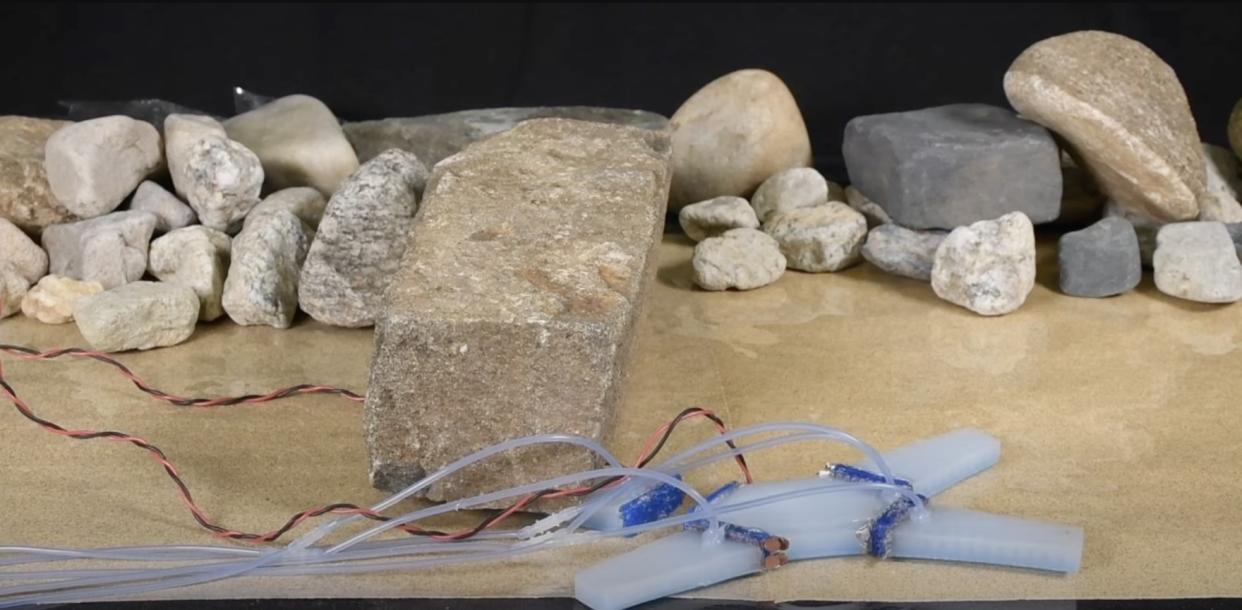Meet the soft robots that can amputate limbs and fuse with other robots

Roboticists at The Faboratory at Yale University have developed a way for soft robots to replicate some of the more unsettling things that animals and insects can accomplish — say, a reptile self-amputating a limb or ants building bridges by temporarily fusing their bodies.
In one demo video, we see a soft quadruped robot crawling along when a falling rock traps a back leg. The reversible joint attaching the leg is heated with current, allowing the robot to break free of its leg and escape. Although it’s not shown in the video, the limb can be reattached, as well.
https://www.youtube.com/watch?v=qPd9x9-bALo
In the second video, a single crawler robot is unable to cross the gap between tables, but three robots are able to fuse together (again, using joints that have been heated and softened by electric current) and then cross the gap as a single unit.
These capabilities aren’t entirely new to the world of robotics (especially modular robotics), but existing systems based on mechanical connections and magnets are inherently rigid, according to Spectrum IEEE. The innovation here lies in the joints, created using a material called a bicontinuous thermoplastic foam, along with a sticky polymer. This combination allows the joint to be melted and pulled apart, then stuck together again.
https://www.youtube.com/watch?v=kFgKRabL7Rc&t=11s
The roboticists described their work in a paper, “Self-Amputating and Interfusing Machines,” published in Advanced Materials. They argue that using their techniques might lead to “future robots capable of radical shape-shifting via changes in mass through autotomy and interfusion.”
Is this more or less freaky than a smiling robot face with living skin? You tell me.

